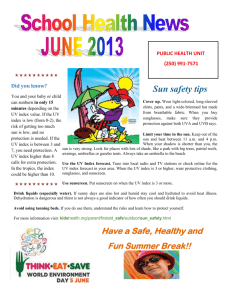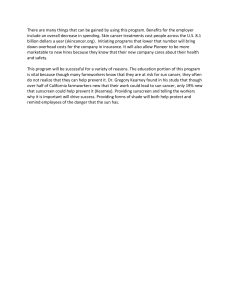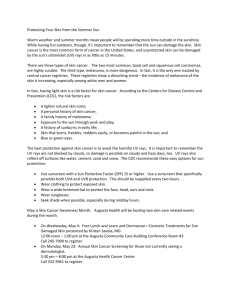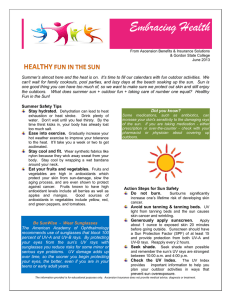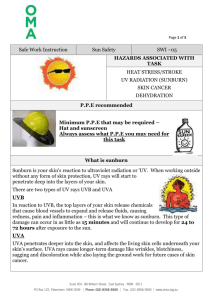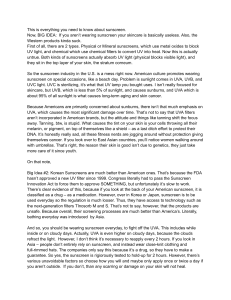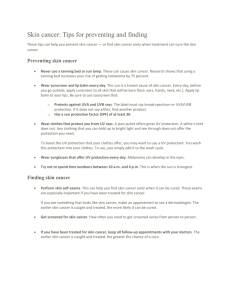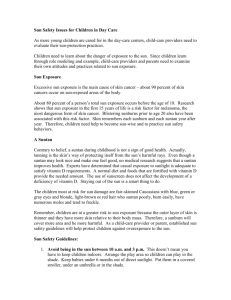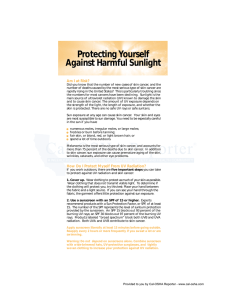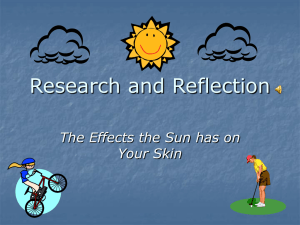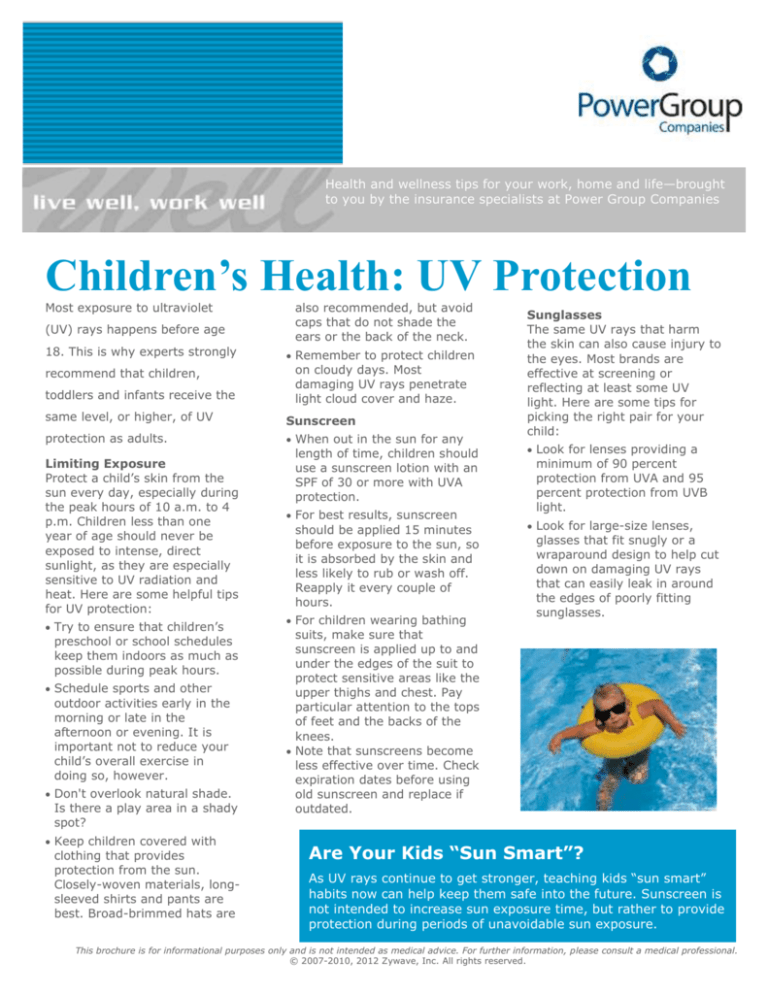
Health and wellness tips for your work, home and life—brought
to you by the insurance specialists at Power Group Companies
Children’s Health: UV Protection
Most exposure to ultraviolet
(UV) rays happens before age
18. This is why experts strongly
recommend that children,
toddlers and infants receive the
also recommended, but avoid
caps that do not shade the
ears or the back of the neck.
Remember to protect children
on cloudy days. Most
damaging UV rays penetrate
light cloud cover and haze.
same level, or higher, of UV
Sunscreen
protection as adults.
When out in the sun for any
Limiting Exposure
Protect a child’s skin from the
sun every day, especially during
the peak hours of 10 a.m. to 4
p.m. Children less than one
year of age should never be
exposed to intense, direct
sunlight, as they are especially
sensitive to UV radiation and
heat. Here are some helpful tips
for UV protection:
Try to ensure that children’s
preschool or school schedules
keep them indoors as much as
possible during peak hours.
Schedule sports and other
outdoor activities early in the
morning or late in the
afternoon or evening. It is
important not to reduce your
child’s overall exercise in
doing so, however.
Don't overlook natural shade.
Is there a play area in a shady
spot?
Keep children covered with
clothing that provides
protection from the sun.
Closely-woven materials, longsleeved shirts and pants are
best. Broad-brimmed hats are
length of time, children should
use a sunscreen lotion with an
SPF of 30 or more with UVA
protection.
For best results, sunscreen
should be applied 15 minutes
before exposure to the sun, so
it is absorbed by the skin and
less likely to rub or wash off.
Reapply it every couple of
hours.
For children wearing bathing
Sunglasses
The same UV rays that harm
the skin can also cause injury to
the eyes. Most brands are
effective at screening or
reflecting at least some UV
light. Here are some tips for
picking the right pair for your
child:
Look for lenses providing a
minimum of 90 percent
protection from UVA and 95
percent protection from UVB
light.
Look for large-size lenses,
glasses that fit snugly or a
wraparound design to help cut
down on damaging UV rays
that can easily leak in around
the edges of poorly fitting
sunglasses.
suits, make sure that
sunscreen is applied up to and
under the edges of the suit to
protect sensitive areas like the
upper thighs and chest. Pay
particular attention to the tops
of feet and the backs of the
knees.
Note that sunscreens become
less effective over time. Check
expiration dates before using
old sunscreen and replace if
outdated.
Are Your Kids “Sun Smart”?
As UV rays continue to get stronger, teaching kids “sun smart”
habits now can help keep them safe into the future. Sunscreen is
not intended to increase sun exposure time, but rather to provide
protection during periods of unavoidable sun exposure.
This brochure is for informational purposes only and is not intended as medical advice. For further information, please consult a medical professional.
© 2007-2010, 2012 Zywave, Inc. All rights reserved.

